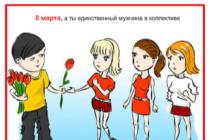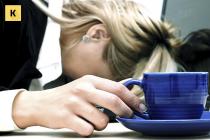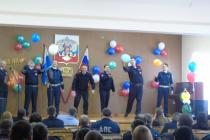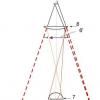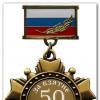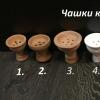Those who are attentive to improving the efficiency of production processes will not be surprised by the phrase “photo of a working day”. But even those familiar with the term have many questions. How to do the right research? Is preparation necessary? How to organize observations and make an analysis? Our article will help you understand everything.
From this article you will learn:
What is working time photography
At first glance, the term “work time photography” sounds almost fantastic. This is the same time, it cannot be touched, seen, captured. But it can be used for anything.
A photo of a working day is a tool that helps to evaluate the efficiency of time use. It is advisable to apply the method in order to understand the reasons for the untimely completion of the tasks. This may be too much workload, lack of qualifications for the employee, or simply the wrong allocation of resources.
Technically, a photograph of working time is not a photograph, but a voluminous document where data is entered on how the day is used. It contains a description of the work task, marks on the beginning and end of its implementation, records of all the actions of the employee. The more detailed the data is entered, the higher the efficiency of the method.
There is no legally approved research regulation. The employer himself establishes and coordinates the procedure for taking photographs of working time.
Objectives of the
Working day photography (FRD) is a powerful management tool that allows you to solve a wide range of business tasks. Among the main objectives of the study:
- Identify and measure time losses.
- Understand how you can optimize the use of work resources.
- Determine the reasons for non-compliance with standards and "leakage" of minutes.
- Collect data to develop optimal labor standards and successfully reorganize work processes.
- Assess the adequacy of the tasks facing employees, their complexity, volumes.
- Conduct a deep analysis of labor efficiency at the enterprise: identify the most labor-intensive processes and types of employment, identify successful and unsuccessful employees.
- To study the experience of the best employees and implement it into work standards.
As you can see, working time photography is more than just a way to supervise employees. This is an effective tool that is needed at different levels of the production hierarchy:
Employees in the field can optimize their working day.
HR and HR staff receive data for compiling or adjusting job descriptions, planning staffing and working hours.
Leaders and managers see the real state of affairs in business processes and can optimize them.
Theme of the issue
Also read about when the court will not allow dismissal for absenteeism, how to detain an employee who wants to quit, and how to return the money spent on an apartment.
Processing and analysis of results
Before drawing conclusions from photographs of working time, the results of observations should be processed.
FRD processing
The first processing step is to count the minutes spent on each operation. The difference between the moments in the first and second columns is entered in column 3.
- Total time - the total duration of the shift (ST), most often this figure is 540 (9 * 60 minutes).
- Preparation for the task - preparation of equipment and workplace (PZ).
- Operation time - the time spent on the action (TO).
- Rest and personal needs - planned breaks (SOL).
- Violations of labor discipline - lateness, unauthorized breaks (NTD).
On the basis of the completed photographic forms, it is possible to compile analytical tables of the balance sheet of the RV or a map of the photograph of the working day. Key indicators for these tables are calculated as follows:
- the time for each type of operation is summarized;
- the share of time for the operation in the shift is calculated (K1 = VO / 540 * 100%).
Here's what the completed map looks like:
The issue of determining labor discipline is extremely important when photographing a taxiway. It is worth remembering that employees are people, each with its own strength and perseverance. Often, smoke breaks, breaks for “talk” or coffee are simply necessary to maintain a healthy working atmosphere and team spirit in the team. Therefore, before starting processing, it is necessary to determine exactly what is considered a violation and what is not.
The data obtained is the basis for analysis and management conclusions.
FRD analysis
The analysis of the FRD allows you to understand the production processes in the complex, evaluating:
- performance of individual employees;
- their working conditions;
- compliance with the complexity of the tasks of personnel qualification;
- load adequacy;
- compliance of the equipment with the tasks performed.
Here are some examples of the conclusions that the FRD allows to draw:
Bonus Or, conversely, pay cuts. For example, according to the results of group photography, it turned out that with an equal workload, some employees show high productivity, while others do not. Rewarding the first and punishing the second will help increase motivation in the team.
Increase in the number of performers. Sometimes the team's poor performance is not the result of a lack of work discipline, but the result of a banal lack of hands. The FRD helps to identify the need to attract additional workers. It happens and vice versa - the team copes with the work quickly and there is a lot of free time. In this case, it is advisable to transfer people to other tasks.
Personnel changes. Often, after photographing, it turns out that a person is simply working in the wrong place - spending too much effort on work that others do quickly. As a measure, you can offer him another position or provide training.
Reorganization of processes. Some complex FRDs reveal that some departments of the company are overloaded while others are "cooling off". Perhaps you should redistribute tasks.
Hardware upgrade. The workplace and tools are an important part of productivity. Often, workers are idle only because they have to work on outdated equipment. At the same time, they get tired, nervous, which further reduces productivity.
Thus, although taxiway photography is voluntary, this tool is extremely important for business development. Quite simple in execution, it provides a lot of important management information.
A photograph of the working day is necessary when determining the time of exposure of the worker to harmful production factors. In the article we will tell you how to compose it, give examples of filling for an electric and gas welder and an accountant.
From the article you will learn:
What is a working day photo
Despite the fact that this document is compiled by a labor rationing engineer, an occupational safety specialist can participate in its preparation if it is necessary to justify the time of work in harmful working conditions for an employee. After all, the intensity of the impact on workers of harmful factors of the production environment also depends on this.
Working time photography (FW) is the control of all processes and time spent at the workplace for a certain period, for example, a working day or several shifts. The results are of great importance in establishing an early pension, other guarantees and compensation.
For some professions, it will be necessary to draw up an analysis of the costs of working hours. For welders, for example, it matters how much time they spend directly welding. You will also need to calculate how many hours a day it takes to work on a PC, while paragraph 3.2.2.4 has not yet been excluded from Appendix 1 to Order No. 302n. Otherwise, if the SOUT expert does not have confirmed information from the employer on the conditions for the performance of work, all decisions will be made "according to the installed capacity". And this will entail the need to establish benefits for employees and increased tariffs in the Pension Fund and social insurance.
What is a working day photo for?
The RFP is required in order to determine:
- potential for optimizing headcount or headcount;
- period of stay under the influence of a certain.
Kinds
When developing standard time standards, it is recommended to determine for homogeneous work the time spent on performing a unit of work (function, service) by one or a group of employees of appropriate qualifications. Such costs include, as a rule, the period of preparation for the execution of the production operation, as well as the processing and presentation of the results.
How to take a photo of an employee at work
In order to correctly estimate the cost of working time, you need to carefully plan the process. Estimating time costs includes several stages:
1. Preparation for the study.
2. Observation.
3. Analysis of the data obtained during the observation.
4. Conclusions and management decision making.
At the preparatory stage, it is necessary to inform employees that a study of time consumption will be organized at their workplaces, including with the use of video recording, that they should go about their business as they always do. For the purposes of the study, the actual costs incurred during normal production activities are needed.
It is not required to request permission for a photograph of a working day, but employees must be familiarized with the order for timekeeping observations against signature. This is the responsibility of the personnel officer.
In the order for timing, you must specify:
- object, goals and objectives of the study, a list of workplaces where it will be carried out;
- a list of expert observers or the composition of the supervisory commission.
Before the start of the photograph, an order should be issued and the employees should be warned to carry out their duties as usual. Observers, employees themselves, a video surveillance system, specialized computer programs can fix their actions. All data received is entered into the employee's working day card (observation sheet).
A sample map is provided for the Guidelines approved by the order of the Ministry of Labor of Russia dated May 31, 2013 No. 235.
All the actions of the employee during the day or shift are entered into the map, indicating the breaks in the order in which they actually occurred, fixing the current end time of each element of the labor process. The end of one operation is the start of the next, so you don't have to record it. If the end and start times of operations do not match, a break is indicated on the card and its reason is explained. The lunch break should be excluded and listed on a separate line.
Analysis of a photograph of a working day
Once the observers have provided the RFF within a few working days, a cost analysis can be carried out. Sample purity is required for analysis. This is achieved by compiling a photograph during the regular process, without rush work, without downtime. Therefore, it is not recommended to conduct timing at the end and at the beginning of the month - at the end of the month everyone strives to complete the plan, and at the beginning of the month goals have not yet been set to the end. The best days for timing analysis are the middle of the week or month.
When processing the received data, the total length of time for each line is calculated and similar operations are summarized. Each type of work should be assigned its own index. The resulting PDF is a confirmation of the percentage of employment of workers in a certain type of work.
For an objective measurement of time costs, it is necessary to ensure that the worker has the tools of his labor in good working order, there is no shortage of raw materials and semi-finished products. The employee must perform his duties in his usual rhythm. If the PDF is recorded on video, the DVR captures the entire working day - from its beginning to the end.
The analysis requires the map to be completed, even if video recording was used to compile it. All actual breaks must be entered on the map. Each entry shows either what the worker did, or what caused his inaction. When recording each element of an operation (work process) or a break, it is advisable to indicate the index of time costs.
Photo of the working day of the worker - an example
Suppose there is a welder in the organization, and this position is on the list for a preferential pension. But the time of his employment is less than 80% of the duration of the working day. If an employee is engaged in work from List No. 2 and there are results of a special assessment, then the company must pay additional contributions for him in the following amount (clause 3 of article 428 of the Tax Code of the Russian Federation):
- 2%, if the class of working conditions is 3.1;
- 4% if working conditions class 3.2 is established.
At the same time, local PFR offices accept certificates from employers as supporting documents, which state that the employee was employed in the relevant types of work during a full working day (more than 80% of working time), extracts from accounting sheets, etc. The legislation does not contain a specific list of documents by which the employer must confirm the relevant working conditions of employees. Therefore, the company can provide any documents.
Here is an example of such a confirmation: a photo card of an employee's working day with his signature. The employee himself was present at the assessment, so in the future there will be no question of the right to a preferential pension.
If the same maps are compiled in 3-5 working days, it will be possible to justify that the employee produces less than 80% in harmful working conditions. To calculate the pension, the influence of the chemical factor - welding aerosol during the welding process, and not the period of preparation for the welding process, including assembly, etc., matters.
Photo of an accountant working day
In order to determine whether a medical examination is required for PC users - office workers, it is also necessary to conduct timing. When working at a computer for more than 50% of the working time, you need to include these jobs in the list of contingents.
Here is a sample of such a PDF for one day of observation. We remind you that you need to make at least 3 such photographs for one workplace for the objectivity of the study, and familiarize the employee with the results.
F Working day photography is useful for employees at all levels of management. Order the service photo of the working day (photo of working time).
AND so what is a picture of a working day.
F Working day photography (or photograph of working time) is a type of observation in which all time spent without exception is recorded throughout the day. Even the smallest things are recorded, such as a minute conversation on the phone, a coffee break, etc.
IN as a result of the work done, they get an accurate cut: what exactly and for how long a particular employee was engaged.
WITH I want to note once again that a photograph of a working day (a photograph of working time) is practically useless if it is taken within only one day and by prior arrangement with the employee. And it is also useless if the data is not processed and conclusions are not drawn.
L it is best to take a photo of a working day (photo of working time) during the week - then you will get more accurate data: the controlled person will relax and behave more naturally during the week, in addition, the quality of work changes on different days and you can get average values if you make photos of several working days.
P execution order.
- Determination of the purpose of holding a photo of the working day (photo of working time).
- Determining the technology of conducting (who will conduct, when, how).
- Preparation of observation forms.
- Observer briefing.
- Taking photos of the working day (photos of working time).
- Processing and analysis of results, development of solutions.
1. Purposes of working day photography (working time photos):
- determination of the actual costs of working time,
- development of standards
- identification and elimination of time losses,
- improvement of the motivation system,
- increasing self-organization,
- optimization of business processes of the organization and many others.
X I would like to point out that workers need to know why they are being observed and what the purpose of photographing a work day is. At the same time, the results of a photograph of a working day (photos of working time) should not be used against employees - they must be used to improve labor.
2. Form of observation.
WITH you can download an observation form (self-photo) or an individual photo of a working day (photos of working time).
3. Training of observers.
H familiarize observers with observation sheets, explain that they should note all the actions of a person, while fixing the start time of a new action, the duration of the action.
H The observer must not interfere in the activities of the worker, nor help him, nor enter into negotiations with him. The observer should only record all the actions. At the same time, he should know well what is the essence of the work of the person who is being monitored.
4. Processing of results.
IN All operations performed by the employee are grouped, each group is assigned its own index. Similar operations have the same index.
WITH Among the generally accepted are the following:
T pz - time spent on preparatory and final work (came to the workplace, turned on the computer, waited for the programs to load, etc.)
T op - operational time, that is, the time that the employee spent on the performance of duties.
T obs - the time spent on solving organizational issues, maintaining the workplace.
T per - breaks in time.
D For a more accurate analysis, you can divide the operational time into groups or select additional categories.
D Next, you balance the actual time of the employee (the actual working time of the photo of the working day).
ABOUT n is a table in which for each group the number of cases, duration (total time of operations for the group), the share of time spent on the time of the entire working day (observed period) are calculated.
Coefficient of use of working time (K isp):
K isp = Tpz+Top+Tobs+T n exc
where T pz, T op, T o6s is calculated according to the actual balance of working time;
T "exc is selected within the standard given in the conditions of the problem;
Tsm - the established duration of the working day (observation time), min.
Loss rate for organizational and technical reasons
Kpot \u003d Tpot / T cm
The coefficient of loss of working time due to violation of labor discipline
Cpnd= Tpnd + (T f exc - T n exc)
where K PND is calculated according to the actual balance of working time;
T*exc and Tn exc - time for rest and personal needs, respectively, actual (according to the actual balance of the working day) and standard (according to the condition of the task).
Possible increase in labor productivity subject to reduction of direct losses working hours can be calculated using the formula:
ΔPT \u003d Tpot + Tpnd + (T f exc - T n exc) * Ks * 100
where K c is the coefficient of reduction of direct losses of working time (0.1; 0.2, etc. With a full reduction in time losses, it is equal to 1).
5. Analysis of the results and development of activities.
A analysis of the results will allow you to understand how much working time is actually used, how often employees take breaks from work, how much time is spent on lunch, how much preparatory work takes.
T You will also be able to determine what is preventing you from doing your job effectively.
IN Having identified all the problems and difficulties, develop activities that will help solve the problems.
P Get information about the service for holding a photo of the working day (photos of working time) You
One of the reserves for increasing the efficiency of any organization is a more productive use of labor resources. In this case, a simple and effective tool for obtaining and analyzing objective data is a photograph of a working day (FRD).
Work day photo is a method that allows you to study the distribution of the time of a particular employee by observing, measuring and documenting all, without exception, the time spent on work tasks during the working day.
Mastering the FRD method makes it possible to obtain unique results in the field of personnel management and its productivity, even in conditions of incomplete coverage of the work performed in the company by rationing. The FRD process is aimed at determining the time spent on each operation, identifying and analyzing the reasons for not completing tasks, and optimizing the labor process as a whole.
Working day photography provides answers to the following questions:
1. How much time does an employee spend on a certain type of work?
2. How much time does it take for different employees to perform the same type of work?
3. Is it possible to increase labor productivity and at what expense?
4. Is it possible to omit (simplify) any of the business processes or delegate them to other departments?
5. How to establish labor productivity standards and identify the reasons for non-compliance with these standards?
Types of FRD
Depending on the number of objects of observation and the target task, the following types of photographs of the working day are used:
. individual- determine the time spent by individual performers, which allows you to study the work with the maximum degree of detail;
. group- monitor the activities of several employees interconnected by the work process, for further rational distribution of responsibilities between group members. The main purpose of group photography is to study the coherence of the work of group members, the degree of their workload, the organization of work, to identify the causes and duration of lost working time, to explore other issues that do not require accurate measurements of time;
. comprehensive- makes it possible to identify the relationship of individual production processes, study the production rhythm of work, determine the degree of rational use of equipment, develop specific measures aimed at increasing labor efficiency. In this case, a group of observers studies the work of a team, workshop, department or enterprise as a whole, which makes it possible to cover the entire set of production processes or a significant part of them;
. self-photography- the specialist independently measures the time of his activity.
Important detail: in order to obtain more objective and reliable data, complex photographs of the working day are taken over several days (weeks, months).
PURPOSE OF USING THE FRD
A photo of a working day can be used for different purposes:
1. Defining the structure of working time, identifying the most costly operations and types of work.
2. Studying the experience of the best employees. The working time budget of employees who demonstrate the best results can be taken as the basis for setting tasks, evaluating the effectiveness of an employee, and finding the best ways to organize work.
3. Establishing norms. Analysis of data for several employees provides input for the development of labor standards. Moreover, the FRD method is used by several employees with different labor efficiency in order to increase the validity of the norms.
4. Identification of the reasons for non-compliance with the norms. If the norms already exist, but individual employees do not regularly comply with them, then with the help of a photograph of the working day, you can identify the reasons for this situation.
5. Identification of lost working hours. With the help of the FRD, it is possible to determine at what stages of the workflow there are losses of working time and what they are caused by: inefficiency in the organization of work, irrationally built technology, or dishonesty of employees.
6. Improving the process of organizing labor at the enterprise. The FRD allows you to describe the existing business processes in the company and evaluate how optimal they are.
7. Evaluation of the employee's work efficiency. Monitoring the work of an employee and assessing his time spent on various work operations is an opportunity to assess the level of his professionalism and motivation.
TECHNOLOGY OF CARRYING OUT FDD
The technology of taking a photograph of a working day consists of several stages.
Stage 1. Preparing for a photograph of the working day.
At the initial stage, the goals of taking a photograph of the working day are set. Based on the goals set, the type and methodology of the PFD are determined.
If the main goal of the FRD is monitoring compliance with the internal labor regulations by the staff, then a photograph of the working day can be taken simultaneously with a group of employees (grouping employees by structural unit or by type of work performed). Violations of labor discipline will be noticeable immediately.
If it's necessary identify lost time, optimize the company's business processes, then a photograph of the working day must be taken individually for each employee, carefully recording the operations performed by him, interaction with other employees and structural divisions.
Also, at the first stage, it is necessary to decide whether to inform employees about the FRD or it is worth coming up with a suitable legend for introducing an observer.
IT IS IMPORTANT
The preparatory stage involves the training (instruction and training) of observers. The results obtained largely depend on the preparation.
It will not be superfluous to coordinate the FRD forms in advance in order to correctly reflect the necessary information in them. This is especially important if the study will be conducted simultaneously in several structural units by different observers.
Stage 2. Photographing the working day.
Photographing is carried out according to the current time. The measurement results are recorded in the observation sheet (Tables 1-3). In columns 1 and 2, the observer records the start and end time of each new action (inaction). In column 4 he describes the activities, in column 5 he lists the equipment needed to do the job. Each entry shows either what the worker did, or what caused his inaction.
Each element of work or break must be documented separately. Particularly clearly should be distinguished the elements of work on the maintenance of the workplace, as well as breaks in work, taking into account their nature and reasons. In this case, columns 1, 2, 4, 5 of the observation sheet are filled in directly in the process of observations, and columns 3, 6 - during processing of the photographic results.
Economist working day photo
This photo was taken on 03/18/2016 by direct measurement of the time spent on the basis of the Order of the head No. 147 of 03/09/2016 in order to study the cost of working time during the employee's working day.
The results are presented in table. 1.
FULL NAME. employee: Petrova A.I.
Work experience in the specialty: 2 years.
|
Table 1. Photograph of the working day of an economist |
|||||
|
Equipment |
Note |
||||
|
Turning on the computer |
|||||
|
Clarification by phone of the content of the required information. Distribution according to requests by e-mail of the planned indicators of the work of the unit |
Computer, phone, Internet connection |
||||
|
Telephone set |
|||||
|
Collection of the necessary initial information for the analysis of the implementation of planned indicators by the production sites of the Voronezh division of Kameliya-Invest LLC |
Computer, phone, Internet connection |
||||
|
Analysis of the implementation of planned indicators for the production of products by the production sites of the Voronezh division of Kameliya-Invest LLC according to the reports of the heads of production sites |
Computer |
||||
|
Clarification of physical and monetary indicators from the executors of reports |
Telephone set, Internet connection |
||||
|
Making changes to the analytical report on the implementation of planned indicators |
Computer |
||||
|
Preparation of analytical notes to the head of the department on the feasibility of introducing new materials in the production of products |
Computer |
||||
|
Exit for personal needs, smoke break |
|||||
|
Analysis of the payroll fund of the Voronezh division of Kamelia-Invest LLC for the month |
Computer, telephone |
||||
|
Conversation on personal topics on the phone |
Telephone set |
||||
|
Payroll planning for next month |
|||||
|
Completion of work, shutdown of equipment, order in the workplace |
Computer, printer, telephone |
||||
I got acquainted with the photo of the working day: economist Petrova A.I.
__________ / Petrova A. I. /
(signature)
"___" _____________ _____ G.
__________ / Ryabchenko A. R. /
(signature)
"___" _____________ _____ G.
This photo was taken on 03/17/2016 by direct measurement of the time spent on the basis of the Order of the head No. 147 of 03/09/2016 in order to study the cost of working time during the employee's working day.
The results are presented in table. 2.
FULL NAME. employee: Makarova S.V.
Job Title: Accountant.
Work experience in the specialty: 13 years.
Subdivision: Voronezh subdivision of Kameliya-Invest LLC.
|
Table 2. Photo of an accountant working day |
|||||
|
Start time of action (operation) |
End time of action (operation) |
Duration of operation (action), min. |
Work in progress (action) |
Equipment |
Note |
|
Turning on the computer, turning on the sorting of electronic databases |
|||||
|
Reception and control of primary documentation for accounting areas and their preparation for accounting processing. Return of documents that are not executed in the appropriate order to the compilers |
|||||
|
Checking email, reviewing content |
Computer, Internet connection |
||||
|
Preparation and sending of the necessary information on the cost of manufactured products in the reporting quarter at the request of the head of the department (selection, photocopying of invoices of third-party organizations, costing by type of product, etc.) |
Copier, computer, printer, internet connection |
||||
|
Exit for personal needs, smoke break |
|||||
|
Performing work on accounting of fixed assets |
Computer, printer |
||||
|
Lunch break |
|||||
|
Performance of work on accounting of production costs |
Computer, printer |
||||
|
Reconciliation with service providers over the phone |
Computer, telephone |
||||
|
Checking email, reviewing content |
Computer, Internet connection |
||||
|
Scanning of payroll documents and sending them by e-mail to the main office of the company |
Computer, scanner, internet connection |
||||
|
Exit for personal needs, smoke break |
|||||
|
Meeting with the head of the department on changes in tax legislation |
|||||
|
Preparation of documents for transfer to the archive |
|||||
|
Turning off the computer and other equipment, order in the workplace |
Computer, printer, scanner, copier |
||||
I got acquainted with the photo of the working day: accountant Makarova S.V.
__________ / Makarova S. V. /
(signature)
"___" _____________ _____ G.
Responsible for taking photographs of the working day: HR manager Ryabchenko A.R.
__________ / Ryabchenko A. R. /
(signature)
"___" _____________ _____ G.
Photograph of the working time of the purchasing manager
This photo was taken on March 19, 2016 by direct measurements of the time spent on the basis of the Order of the head No. 147 dated March 9, 2016 in order to study the cost of working time during the employee's working day.
The results are presented in table. 3.
FULL NAME. employee: Sergeev P.I.
Job Title: Purchasing Manager.
Work experience in the specialty: 9 years.
Subdivision: Voronezh subdivision of Kameliya-Invest LLC.
|
Table 3 Photograph of a purchasing manager working day |
|||||
|
Start time of action (operation) |
End time of action (operation) |
Duration of operation (action), min. |
Work in progress (action) |
Equipment |
Note |
|
Turning on the computer, printer, copier |
Computer, printer, copier |
||||
|
Request from the planning and economic department of the procurement budget, agreed with the financial department, for the current quarter |
Computer, phone, Internet connection |
||||
|
Requesting information from the main warehouse about the availability of materials |
Computer, phone, Internet connection |
||||
|
Determining the availability and requirements for materials for the current quarter |
Computer, telephone |
||||
|
Exit for personal needs, smoke break |
|||||
|
Computer, printer, telephone |
|||||
|
Lunch break |
|||||
|
Drawing up a monthly purchase plan |
Computer, printer, telephone |
||||
|
Exit for personal needs, smoke break |
|||||
|
Carrying out marketing research to study proposals from suppliers, price levels, delivery terms according to the procurement plan |
|||||
|
Reception and processing of documents related to the procurement |
Computer, printer, Internet connection, telephone |
||||
|
Exit for personal needs, smoke break |
|||||
|
Final agreement with the supplier on the terms of prices, date of shipment and method of delivery of products to the warehouse |
Computer, internet connection, telephone |
||||
|
Entering reference information into the supplier database |
Computer, Internet connection |
||||
|
Drawing up a report on the work done during the day, turning off the computer and other equipment |
Computer |
||||
Acquainted with the photo of the working day: Purchasing Manager Sergeev P.I.
__________ / Sergeev P. I. /
(signature)
"___" _____________ _____ G.
Responsible for taking photographs of the working day: HR manager Ryabchenko A.R.
__________ / Ryabchenko A. R. /
(signature)
"___" _____________ _____ G.
Stage 3. Processing of results.
The calculation of the duration of the elements (filling in column 3) is carried out when processing the results.
At this stage, column 6 is also filled in, each element is classified. For non-production personnel of the company "Kamelia-Invest" used the following classification of working hours:
OV - total working time (duration of the work shift);
PZ - (preparation for the task, maintaining the means of production in working order during the shift);
OP - ;
OLN - ;
NTD - (lateness, unauthorized absences from the workplace, premature departure from work, etc.).
On the basis of the data obtained (Tables 1-3), a balance of labor activity is created. Table 4 presents economist's working time balance.
|
Table 4. Balance of working time of an economist |
||||
|
Description |
Total observation time, min. |
|||
|
Organization of the workplace and final work |
540 min. (9 h) |
|||
|
Operational time (time of direct execution of tasks) |
||||
|
Leisure time and personal needs |
||||
|
Violations of the rules of labor discipline |
||||
Column "Total duration, min." tab. 4 is filled based on the data of table. 1 as follows:
PV = 10 + 15 = 25 (min.);
OD = 45 + 60 + 70 + 40 + 30 + 75 + 65 + 35 = 420 (min);
EA \u003d 10 + 60 + 10 \u003d 80 (min.);
NTD \u003d 5 + 10 \u003d 15 (min.).
Calculation of the coefficient K1, which shows the share of the cost element in the total observation time:
K1 (PZ) \u003d 25 / 540 × 100% \u003d 4.6%;
K1 (OP) \u003d 420 / 540 × 100% \u003d 77.8%;
K1 (OLN) \u003d 80 / 540 × 100% \u003d 14.8%;
K1 (NTD) \u003d 15 / 540 × 100% \u003d 2.8%.
Consider accountant's work balance(Table 5).
|
Table 5. Balance of working hours of an accountant |
||||
|
Working time classifier |
Description |
Total duration, min. |
Percentage of total observation time (K1), % |
Total observation time, min. |
|
Organization of the workplace and final work |
||||
|
Operational time (time of direct execution of tasks) |
||||
|
Leisure time and personal needs |
||||
|
Violations of the rules of labor discipline |
||||
Filling in the column "Total duration, min." based on the data in Table. 2:
PV = 10 + 5 = 15 (min.);
OD = 15 + 20 + 105 + 80 + 75 + 15 + 15 + 45 + 50 + 25 = 445 (min);
EA \u003d 10 + 60 + 10 \u003d 80 (min.).
There are no violations of labor discipline rules.
Calculation of the coefficient K1, reflecting the share of the cost element in the total observation time:
K1 (PZ) \u003d 15 / 540 × 100% \u003d 2.8%;
K1 (OP) \u003d 445 / 540 × 100% \u003d 82.4%;
K1 (OLN) \u003d 80 / 540 × 100% \u003d 14.8%.
Table 6 contains data on the balance of working time purchasing manager.
|
Table 6. The balance of working hours of the purchasing manager |
||||
|
Working time classifier |
Description |
Total duration, min. |
Percentage of total observation time (K1), % |
Total observation time, min. |
|
Organization of the workplace and final work |
||||
|
Operational time (time of direct execution of tasks) |
||||
|
Leisure time and personal needs |
||||
|
Violations of the rules of labor discipline |
||||
Column "Total duration, min." tab. 6 is filled based on the data of table. 3:
PV = 10 + 35 = 45 (min.);
OP \u003d 5 + 15 + 150 + 50 + 30 + 80 + 45 + 15 + 15 \u003d 405 (min.);
EA = 10 + 60 + 10 + 10 = 90 (min.).
There are no violations of the rules of labor discipline.
Calculation of coefficient K1:
K1 (PZ) \u003d 45 / 540 × 100% \u003d 8.3%;
K1(OP) = 405 / 540 × 100% = 75%;
K1 (OLN) \u003d 90 / 540 × 100% \u003d 16.7%.
Stage 4. Analysis of the results and development of solutions (recommendations).
Based on the data obtained as a result of the FRD, conclusions are drawn and recommendations are developed to eliminate the identified shortcomings.
In our case, the analysis of photographs of the working day of an economist, accountant and manager of the Voronezh division of Kamelia-Invest LLC showed enough high level of compliance with labor discipline, since there are either no violations, or the NTD has a low value (2.8% of the total observation time for an economist).
Before starting the observation, it is necessary to decide what exactly is considered a violation of labor discipline. After all, the so-called smoke breaks, tea drinking during working hours, conversations with colleagues on extraneous topics and other time wasters are often simply necessary to maintain a normal environment in the team from a moral point of view.
Important detail: in order to avoid misunderstandings on this matter, it is recommended that the internal labor regulations be set out in writing, coordinated with the team and the trade union organization. When hiring new employees, it is necessary to familiarize them with these rules.
During the PFD, it was revealed that the purchasing manager spends about 30 minutes. each day to report on the day's work. The management of Kamelia-Invest considered that this was a significant investment of time, and decided simplify the forms of intra-company reporting both purchasing managers and other employees.
NOTE
Reporting forms, their content and frequency should be reviewed periodically in any case, as in today's rapidly changing business environment, any information quickly loses its relevance.
Based on the results of the FDD, it was decided to include in the staffing table of the Voronezh division of Kamelia-Invest LLC the rate of a computer typing operator to delegate the following functions to him: photocopying and scanning documents, sending and receiving e-mail, archiving documents, compiling simple reports and text documents . It allowed unload qualified personnel(accountants, economists and managers).
In any case, it is easier to find a person who has the skills to communicate with a computer and other office equipment than a competent economist, responsible accountant and experienced manager. And from the point of view of remuneration, this option is the most optimal.
The efficiency of any department largely depends on its provision with modern high-speed equipment (high-speed computers capable of working with large amounts of data) and communication facilities. Perhaps, according to the results of the FRD, in some cases it will be justified to purchase such equipment, because the efficiency of the company depends on the efficiency and reliability of the data received.
The FRD also provides an opportunity to consider the use of the same equipment (scanners, large format printers, color printers) by several employees / departments without compromising the effectiveness of their work. Such equipment is used, as a rule, sporadically, to perform one-time tasks.
The results of the FRD can be used to resolve the issue of promotion, for certification, awards, etc.
FOR YOUR INFORMATION
A photograph of a working day can be taken by the company itself (a more economical option) or entrusted to a company specializing in this (the result of the study will be more reliable).
The personnel, organizational system, methods of work, management style of the company are quite easily influenced by the enterprise, manageable and at the same time have a significant impact on the overall performance indicator. That is why a lot of attention should be paid to increasing labor efficiency, and the FRD in this matter is one of the most convenient and rational methods for studying the costs and losses of working time.
O. S. Polyakova, expert
Efficiency makes people successful, competitive. An excellent tool for researching how efficiently you use working time is working time photography, in other words it is also called timekeeping. What is this tool, how to use it and what results it brings - read in the article.
What is a working time photo?
This is a research method in which a whole working day or a certain period of time is subjected to continuous measurement. Thanks to this observation, you can get information about what an employee, a group of employees or a team is doing during the working day. Supervision is carried out by a specialist, and such a study can also be carried out independently. Fixations are totally subjected to all actions, both related to work, and distractions, smoke breaks, and so on.
Among employees who are fond of time management and realize the importance of rational use of time, this is a popular tool. Moreover, if you are interested in the question of how to optimize working time, the photo of working time will be the first step. You can only manage what is measured. Often, just observing, even without making changes to the working day, already leads to an increase in efficiency.
Goals
This method has a number of goals. One of the most important is the identification of time losses during the working day. The next one is to determine the reasons for the loss of time and develop a system of measures that will allow you to work more efficiently. Working time photography allows you to develop time standards for work processes, learn from the organizational experience of the most successful employees and teach it to other people to achieve high results.

This kind of research becomes especially valuable when the issue of expanding or reducing staff, redistributing responsibilities is being decided.
Whether you want to discuss with your manager a raise in your pay or the search for an assistant, a self-composed individual photo of working hours will be an excellent evidence base. You will have weighty arguments, the manager will take your proposals more seriously if you prepare in this way.
Taking pictures of working time
Despite the fact that the name of the procedure contains the word "photography", none of the photographic equipment is required. All you need is paper and a pen. To simplify the task, ready-made forms with filling samples have been developed. They can be found in legal systems like "Consultant". You can develop the form yourself or get by with an ordinary table.
One day is not always enough, so the observation can be carried out for several days.
The whole process can be conditionally divided into three stages: preparatory, observation process, processing of results. At the preparatory stage, forms are compiled and filled out, at the stage of observation, a record is kept, at the stage of processing the results, they calculate how long this or that type of work takes, analyze the effectiveness, and draw conclusions.

Scoring
- Preparation and completion work (starting up the equipment, preparing the necessary tools, turning off the equipment, cleaning the workplace).
- Organizational matters.
- Time spent on the direct performance of duties.
- Breaks for rest and lunch.
Smaller groups can be distinguished, if appropriate for a particular study. Then a coefficient is calculated showing the efficiency or inefficiency of the employee's working day.

Form for timing
The form must have a “header” where information is entered about the full name and specialty of the employee, the enterprise where the study is being conducted, the date and time of the analysis.
Then there should be a table. The first column is a serial number, then a column for the name of the work performed. The third column indicates the period of time from when and how long the work was performed. The fourth column calculates the amount of time spent on work. You can add a comment column.
Main types of research
They can observe one employee, then it will be an individual photo. They can observe a group or a brigade, then it will be a group or brigade photo.

If the observation is carried out throughout the working day, then such a photograph is called classical. You can not fix the whole day, but only its individual moments.
Another division has already been mentioned above. A specialist can observe, or you can take pictures of the working day yourself. When using an outside observer, you may encounter a negative reaction from employees. They may refuse to work under supervision or, on the contrary, start working faster and more than usual, which will lead to incorrect data on time costs.
Research can also be carried out with the help of video equipment. On the one hand, this allows you to obtain objective information, on the other hand, not every action can be clearly distinguished by observing it only from the side, without comments from the person performing the work.
Psychological preparation
A study of how employees use working time - a photograph of working time, a technically simple but psychologically difficult way. Employees perceive such studies as an attempt to monitor them, worsen working conditions, identify shortcomings and punish them.
Therefore, it is important to pay attention to preliminary explanations of the importance of such a study. Makes a big impact If people work in an atmosphere of trust and goodwill, they will be willing to do anything that will help make the organization more efficient and competitive. If, on the contrary, the team is characterized by distrust, constant punishment, then it will be extremely difficult to obtain reliable information that will really give results.
It is important to build a motivation system in which it would be beneficial for employees to work most efficiently.

Parsing an example
It is not possible for every employee to make an accurate timing of the working day. The most difficult thing to do is to conduct it with employees in managerial positions, the photograph of an accountant's working time is especially difficult. It is easier with those specialists whose operations have clear boundaries and distinctive features. As a rule, these are working specialties.
Let's look at an example. An employee is a manager in a corporate department. Here is a photo of the working time (sample):
- The beginning of the working day - 9-00.
- Preparation (booting the computer, preparing documents) - 9-10.
- Planning meeting - 9-15.
- Telephone conversation with a key client - 9-30.
- Checking email - 9-42.
- Preparing a contract for a client - 9-53.
- Smoke break - 10-37.
- Preparing a presentation of a new product for a client - 10-57.
- Lunch - 14-05.
- Internship of a new employee - 14-58.
- Smoke break - 16-15.
- Calling customers - 16-30.
- End of the day (cleaning the desktop, turning off the computer) - 17-55.
- Departure home - 18-00.

Who needs such information?
First of all, the stakeholders are the managers and owners of the company who want to understand how optimally the staff is loaded, whether the company's labor resources are used efficiently.
Employees of the personnel department, personnel departments also need such studies in order to draw up feasible job descriptions, select exactly the number of employees that the organization needs, and conduct research work.
Responsible employees themselves are interested in the fact that the working day is used efficiently, without downtime and emergency work, there are no situations with overtime or work taken at home.
Now you are familiar with a technique that allows you to assess whether working time is being used effectively (photo of working time). Try to put the method into practice, you will find a large number of reserves, you will see how to work optimally. Thanks to this approach, you can turn into one of the most productive employees of the company, and this will definitely be seen and appreciated.





